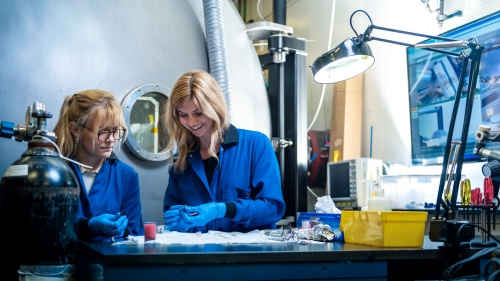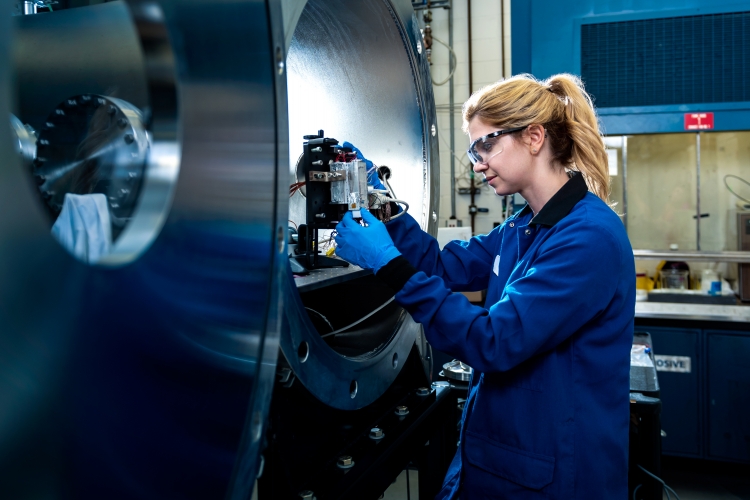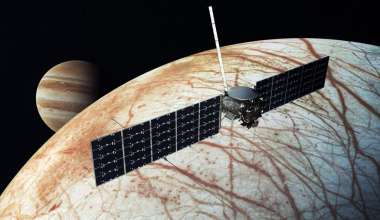Small satellites are becoming more and more capable, taking over missions that used to require larger spacecraft. However, adding propulsion systems to these smaller platforms remains a challenge, which means many small sats are limited to applications that do not require active orbit maintenance, increases in altitude, or changes in inclination.
Working in conjunction with the University of Southern California, Aerospace is developing a monopropellant vapor propulsion system that could help solve this problem.
“This type of system could enable the satellite to perform formation flying, auto rendezvous, extend mission durations, or change orbits while not substantially affecting power or volume budgets,” said Dr. Brandie Rhodes, the principal investigator on this project.

Small satellites face some unique challenges in terms of propulsion. To start with, they obviously don’t have much space for a propulsion system. In addition, they often launch with other satellites, and their propellant must not present a risk to the satellite sitting next to them in the launch vehicle.
Small sat propulsion systems do exist. In fact, Aerospace developed a xenon cold gas thruster that launched in 2006 and a steam thruster that flew in 2017.
Rhodes and team are looking at a different way of tackling the problem. They patented a method of evaporating the vapor off a liquid propellant (such as hydrogen peroxide), and then delivering the vapor to a catalyst to react.
In the future, they envision using a process called thermal transpiration to help regulate the flow of the vapor and increase the pressure further.
They call their system the Hydrogen Peroxide Vapor Thruster, or HyPer. HyPer provides thrust with low pressure and minimal power requirements while still providing higher specific impulse than comparable systems. It only requires around ¼ unit (5 x 5 x 10 cm) of space.
“There are no other propulsion systems of this style or with these benefits,” Rhodes said.

The team has developed several iterative prototypes, completed performance and safety testing, and is working on refining their design, with the goal of having a flight-ready system later this year.
Commercial or government small satellite manufacturers could use this technology to add a simple, small, higher performance propulsion unit to their satellite.
As Rhodes puts it, “If we want to replace large, expensive satellites, we need to develop new propulsion systems that work on a small scale.”









